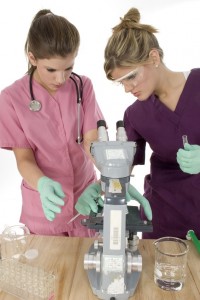53 per cent of professionals polled rated this as the top reason why they think at-risk patients – including over 65s, pregnant women and those with weakened immune systems because of other diseases – miss out on vaccination. It ranked in the top five reasons among 94 per cent of respondents.
The next biggest concern for HCPs was that patients who have not previously had flu do not consider themselves at risk, with 86 per cent placing this in the top five reasons patients miss the jab. And 76 per cent said patients being unaware of the increased risk of complications from flu were among the top five reasons.
Flu is an infectious viral illness spread by coughs and sneezes. It is different from the common cold because it is caused by different viruses and tends to result in more severe and long-lasting symptoms. Flu can be prevented through good hygiene, vaccination and, in some cases, antiviral medication.
During the last flu season, uptake of the flu vaccine varied in at risk groups with just around 40% of pregnant women and 73% of over 65s being immunised across England.
To find out more we contacted an interview with Dr Jonathan Pittard, a UK based family doctor.
PATENTTALK.ORG: Thanks for taking time to talk us Dr Pittard, can you start by telling us what influenza is?
DR PITTARD: Well influenza is a viral illness of several different strengths but you only get one at a time. Essentially it gives you a very high fever, and a very bad headache and a very bad muscle ache. So essentially for 4 or 5 days you are sneezing and snuffling a bit, you can hardly stand up, you can get to the bathroom and back to your bed and you feel pretty dreadful. It is a bit like having malaria so it is way worse than a cold.
PATENTTALK.ORG: And, what are the different types of flu and how do they infect people?
DR PITTARD: There are two classifications; there is A influenza and B influenza. B has by reputation to be slightly more severe. The most recent A one that people will be familiar with would be swine flu, which came out in 2009-10. We vaccinated a lot of pregnant women then because it was worst in pregnancy. The actual illness I had in April of that year and happily it was just for the Friday, Saturday, Sunday so I didn’t miss any work but the current vaccine has a 2009 strain in and two from 2012. One of A vaccine and one of B virus and they were identified in the States. In the case of Swine flu it came up from Mexico from pigs to humans and that’s how it has picked up. So the World Health Organisation keeps an eye out for this like Sherlock Holmes and spots what the trends would be; the virus strains that we haven’t had in Europe and it will put the manufacturers on advice to make the vaccine to anticipate the ones we haven’t had.
PATENTTALK.ORG: Could you just tell us a little bit about the particular danger posed by the different strains of flu, such as bird flu.
DR PITTARD: Well the biology of it seems that these viruses, similar with the Ebola virus, they seem to get into animal systems and seem to mutate there. And then there are places in China in case of bird flu there are a lot of poorer Chinese who will live with chickens in their house and because chickens are kind of valuable they keep them under their beds, you can well imagine if you stay with a chicken long enough it may share one of its viruses with you, and when the jump is made from avian bird flu to a human often the human system reacts very badly to it, and there have been one or two deaths. So it is quite interesting biology. In the case of the Ebola virus, it was bush meat and people were eating these animals and getting these animal viruses.
PATENTTALK.ORG: Can you just briefly outline how the flu jab works?
DR PITTARD: What happens is the myth that the survey shows, people object to the flu vaccine on the one ground is maybe that they think it will give them the flu. Some viruses are actively vaccinated into us. Polio used like that – it was audited in a way that it didn’t make you ill but it gave you immunity for life. With the flu vaccine they extract the infectious part and they just give you the virus ‘skin’, to give it to you in simpler terms and it then prompts your immune system to look out for that virus when you meet it live in the future. So after about ten days you meet the live virus your immune system won’t take a hold because it will recognise the skin, the armour if you like, and will destroy it before it starts with the Interferon that is the body’s anti-viral. So it is a dead vaccine, it won’t give you the flu.
PATENTTALK.ORG: So is it a myth, then – that you may develop symptoms of flu by having the jab?
DR PITTARD: Yes, I think what happens is when people go to the doctors they pick up a virus in winter, they are incubating it they get hit in the waiting room or the supermarket on the way home, and it coincides with the flu vaccine and for a few patients they say “Oh, well that is what has given me the flu, I should not have had the flu vaccine”, and so they become adverse to it. Most of our patients don’t subscribe to that but that is what the survey, Ipsos Moray GSK Survey showed. And so we are really keen to expose that as a myth.
PATENTTALK.ORG: Are there any possible complications from having the flu vaccine?
DR PITTARD: Well the headline objection that’s very rare is that if a patient has true intolerance to eggs, and you might not like eggs, you might not like egg soufflé or egg fried rice or omelettes but that is not an allergy an allergy is where your tongue swells up, your eyes close, you need adrenalin, and you get very asthmatic I mean that is very rare to eggs it is probably as rare as being allergic to milk but because the vaccine is prepared using live hens eggs which is un-purified there is a theoretical objection to that, but that is the only headline issue. If for example you are very allergic to rare ingredients in the flu vaccine, the preservatives in the other vaccines you have had a reaction to tetanus, you have had a reaction to pneumonia vaccine, then possibly your doctor will know that. These are very rare 1 in 10,000 or 1 in 1,000,000 cases. For the bulk of us, none of that applies. If you can tolerate eggs, you can tolerate the flu vaccine.
PATENTTALK.ORG: Who is particularly at risk from believing in these myths?
DR PITTARD: The best way to answer that is the “at risk” population. Most GPs are concerned with the over 65’s because you tolerate flu worse and worse as you get older. The rest of your biology is compromised by aging; heart, lungs and so on. You are more likely to get pneumonia and you are less likely to be able to look after yourself. Younger patients that battle on are a bit stronger I guess. So the national policy is to vaccinate the over 65’s and also vaccinate people with pneumonia and bronchitis risks, diabetic risks, heart disease risks and one of the two groups like care workers and ambulance drivers. These are the people that need the vaccine and they are the ones that are likely to object for grounds of getting the flu from the flu vaccine, which is not true. The other objections that the survey showed is they thought that they never got the flu so they didn’t need it. Of course eventually, it is like Russian roulette, they will get it.
PATENTTALK.ORG: Final question, what is your advice to anyone who might be worried about getting the flu?
DR PITTARD: Well, the national policy which had thousands of patients seeing their GP’s in October / November and the GP’s keep the flu vaccine in their surgery, their special clinics, and kept in touch with their practice, if you have moved area just talk to the reception staff and they will make it very easy for you to get your vaccine. If you are concerned that you may have a particular risk then you can have a consultation with your GP by phone for example, and they can often phone you back, book an appointment to talk about it or if you are outside of the risk group that the NHS will vaccinate you then you can still go to pharmacy chains and buy the vaccine for about £10, maybe less, and have it yourself. There are very few contraindications of having this, it is a very safe procedure.


